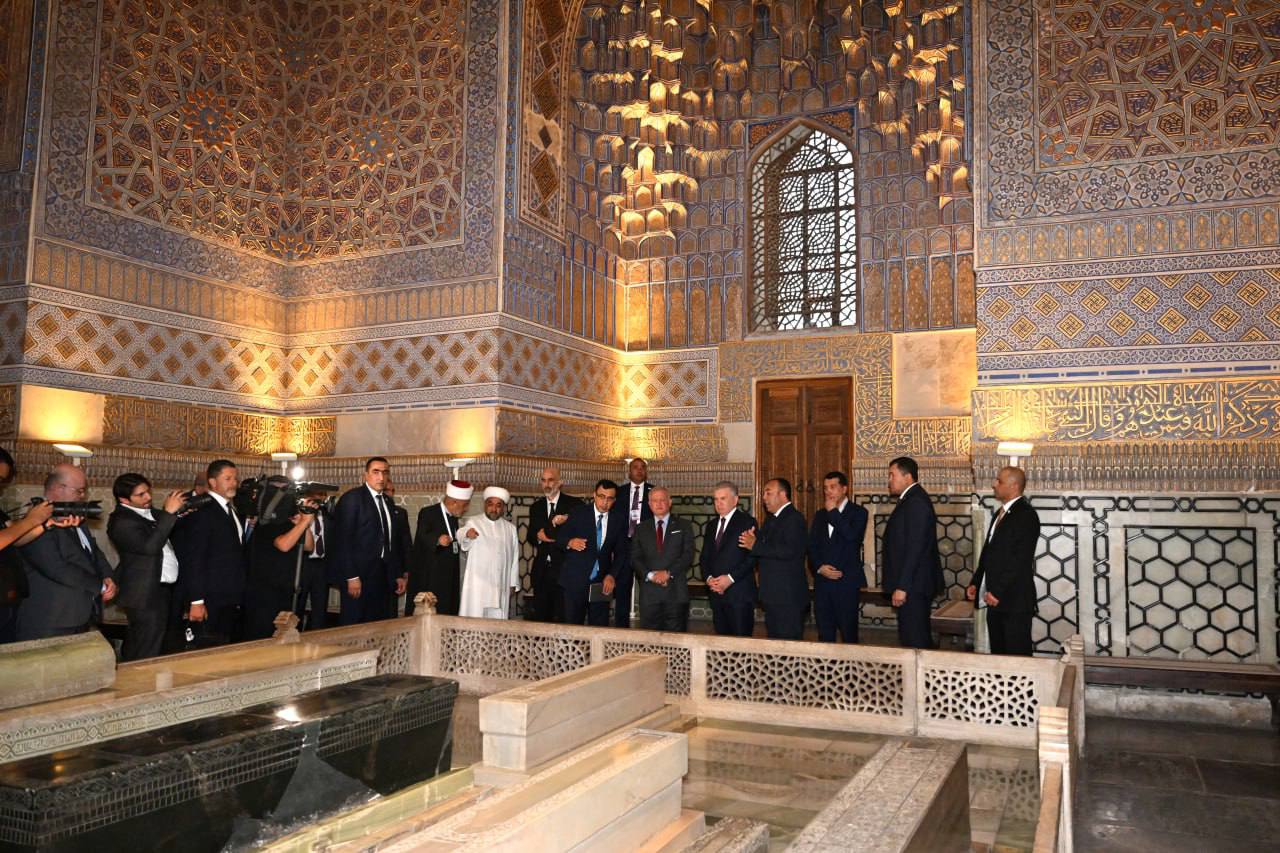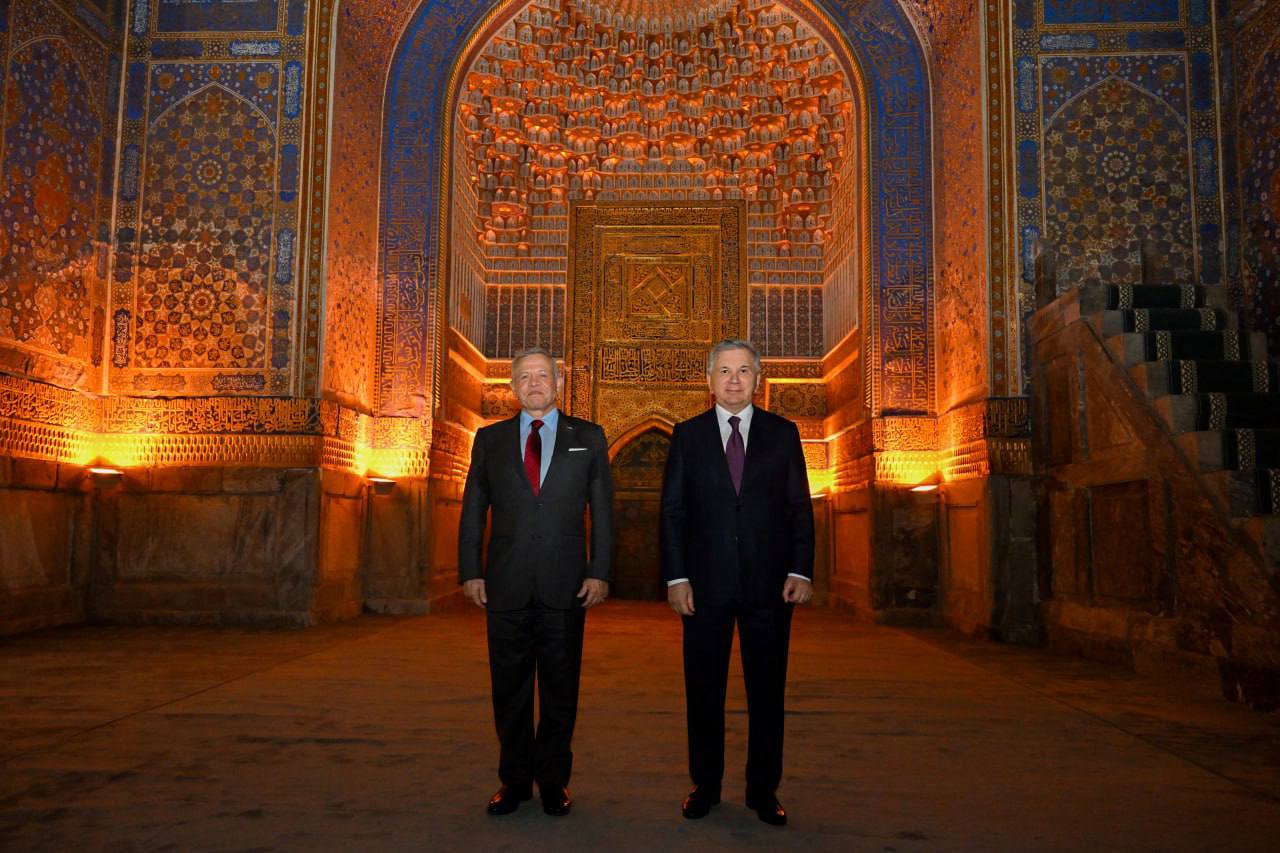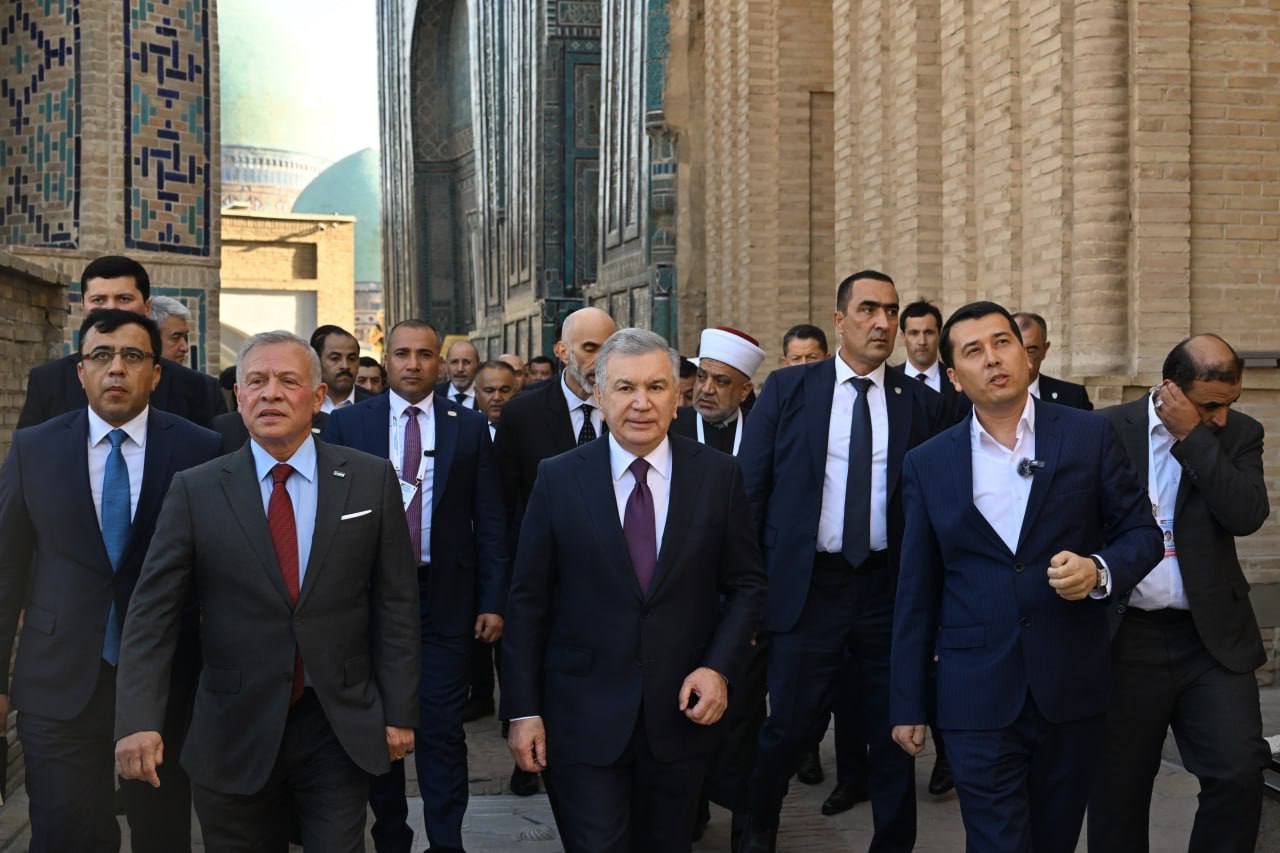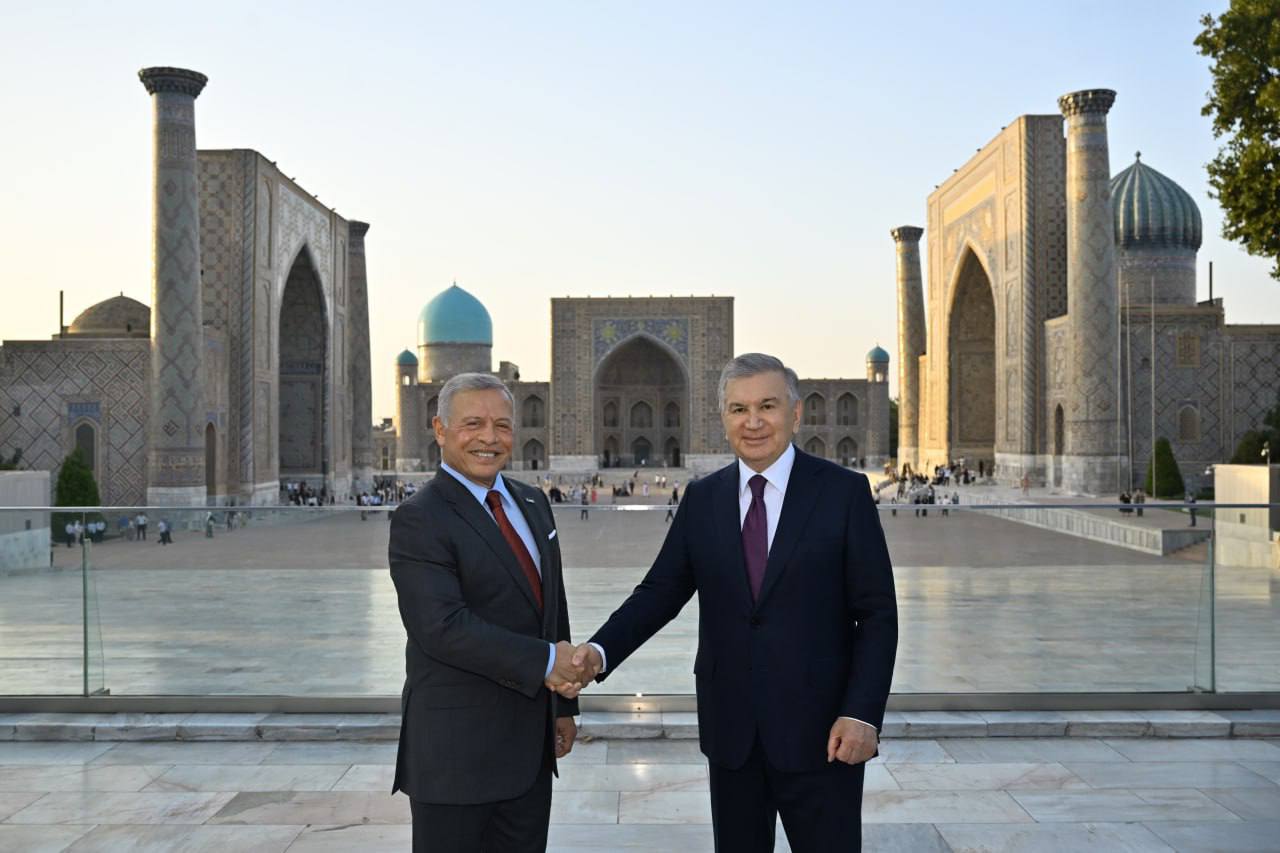

King Abdullah II ibn Al Hussein of Jordan, together with President of the Republic of Uzbekistan Shavkat Mirziyoyev visited the magnificent architectural monuments of the ancient city of Samarkand.
At the beginning of their visit, the heads of state visited the Shah-i-Zinda complex.
This complex consists of the mausoleums of the Prophet Muhammad’s follower Kusam ibn Abbas and other figures. The historical, cultural, and artistic value of the complex lies in the fact that it provides an insight into the development of architecture and decorative art over several centuries. Shah-i-Zinda was included in the UNESCO World Heritage List in 2001.
The King of Jordan, a representative of the Hashemite dynasty, officially tracing its lineage back to the Prophet Muhammad’s daughter Fatima and his son-in-law Ali ibn Abu Talib, honored the memory of Kusama ibn Abbas. Suras from the Quran were recited.
During the visit to the mausoleum of Amir Temur, the Jordanian delegation was told about the state-building policies of our great ancestor, his military talent, and his diplomatic relations with various countries. The history of Sakhibkiran’s life and activities, as well as the largest state of his time that he created, made a huge impression on the guests.
The heads of state also visited the Registan complex, which consists of the Mirzo Ulughbek, Sherdor and Tilla-Kori madrasahs. These monuments have attracted researchers for centuries and served as a school for hundreds of scholars. With its symmetry and architectural appearance, Registan is deservedly considered the “visiting card” of Samarkand.
During the visit, the distinguished guest was presented with information about the history of the construction and the features of the ornaments of this structure, as well as the restoration work carried out on the square.

